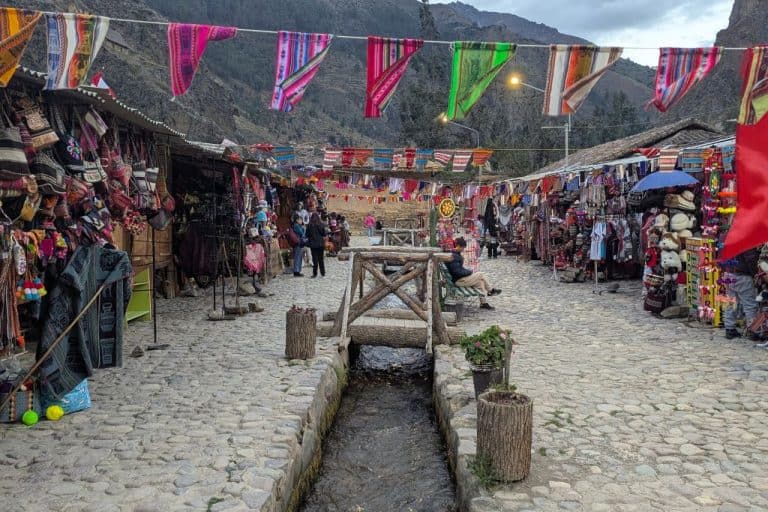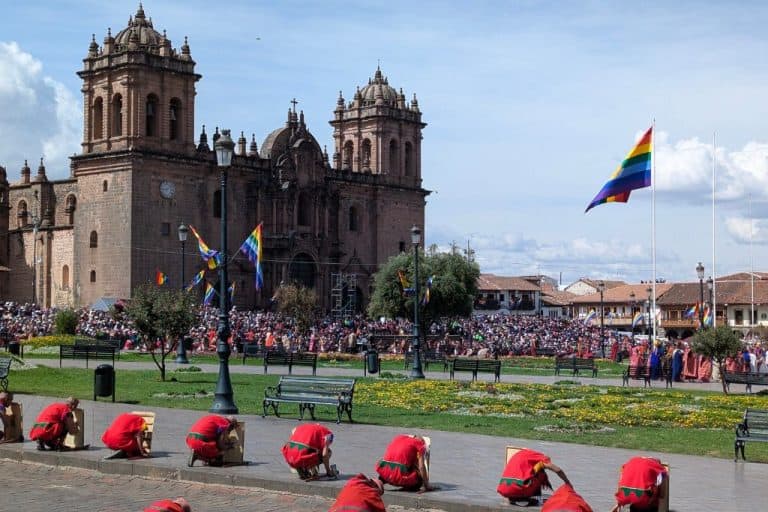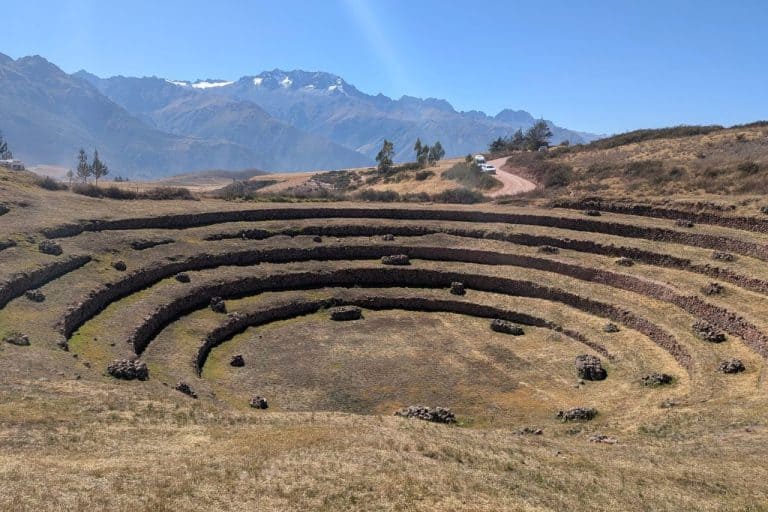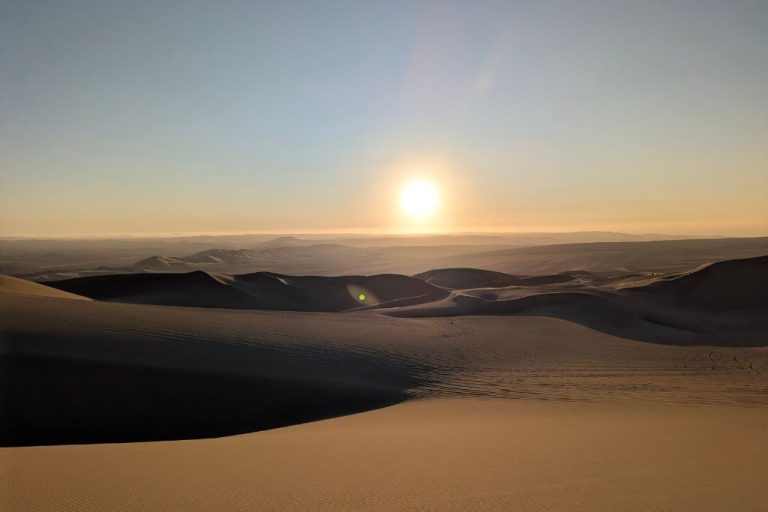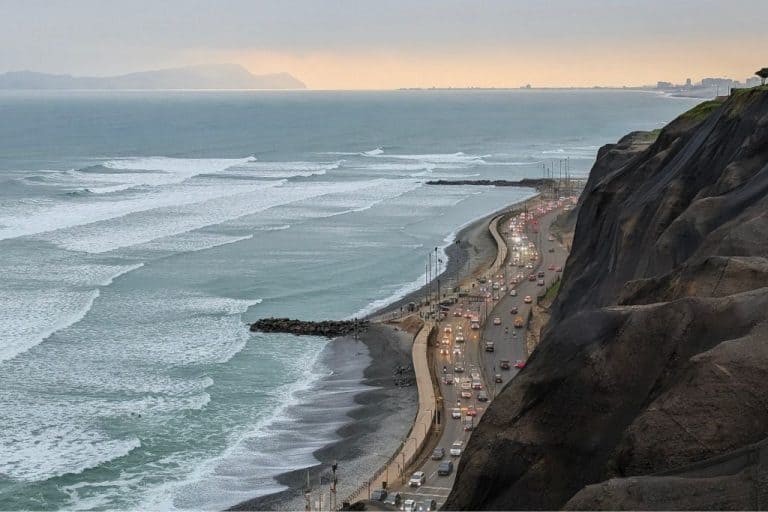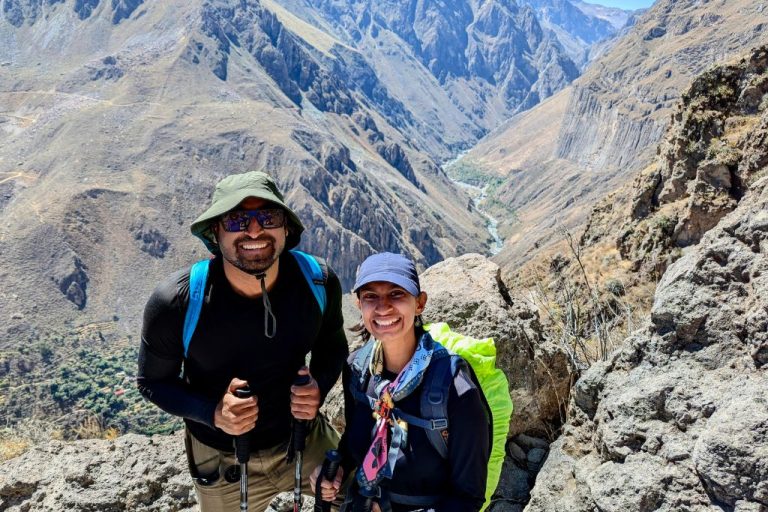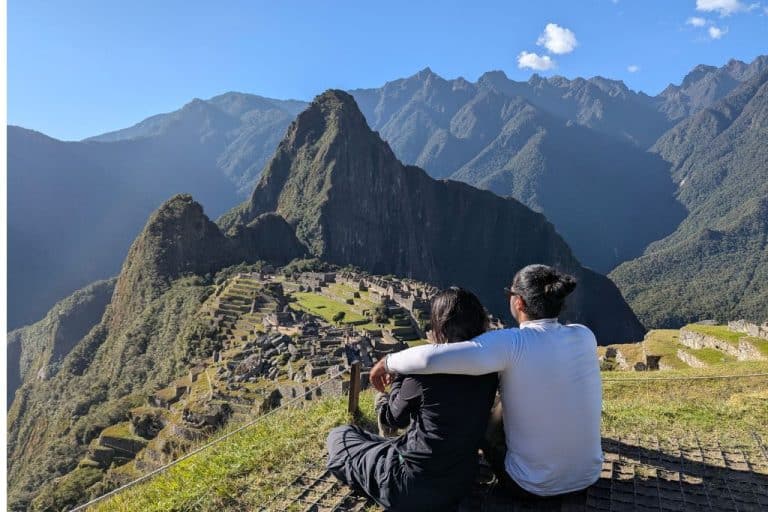Santa Cruz Trek: 4-Day Journey Through the Cordillera Blanca
Note: This blog isn’t written as marketing material. It’s an honest reflection of our own experience on the Santa Cruz Trek.
After months of exploring Peru and Bolivia, from Machu Picchu to Colca Canyon, we craved something wilder. Something that would challenge us, ground us, and stay with us long after it ended.
That’s how we found ourselves planning the Santa Cruz Trek with Wanderfree Peru. From the first message, Vincent made everything smooth, with quick replies, clear details, and no guesswork.
We didn’t know it then, but this trek would become one of the most unforgettable parts of our travels, complete with an unexpected twist.
About Santa Cruz Trek – Cordillera Blanca

The Santa Cruz Trek is one of those hikes travellers can’t stop talking about, the kind that becomes a legend on the road. Hidden in Peru’s Cordillera Blanca, it’s known for its turquoise lakes, snow-dusted peaks, and raw beauty that reminds you why you love hiking in the first place.
Running through Huascarán National Park, the trail climbs to 4,750 meters, passing shimmering lagoons like Laguna 69 and valleys framed by giants such as Alpamayo and Huascarán, some of the Andes’ tallest peaks. It’s a landscape that humbles you with every step.
Trip Details
- Duration: 4 Days / 3 Nights
- Difficulty: Challenging
- Max Altitude: 4,750 m (Punta Unión Pass)
- Total Distance: ~56 km
- Scenery: Snow-capped peaks, turquoise lakes, rivers, and wild valleys
- Tour Operator: Wanderfree Peru
- Guide: Yordi (kind and incredibly knowledgeable)
- Trip Lead: Vincent (incredible communication and organization skills)
Pre-Hike: Settling into Huaraz
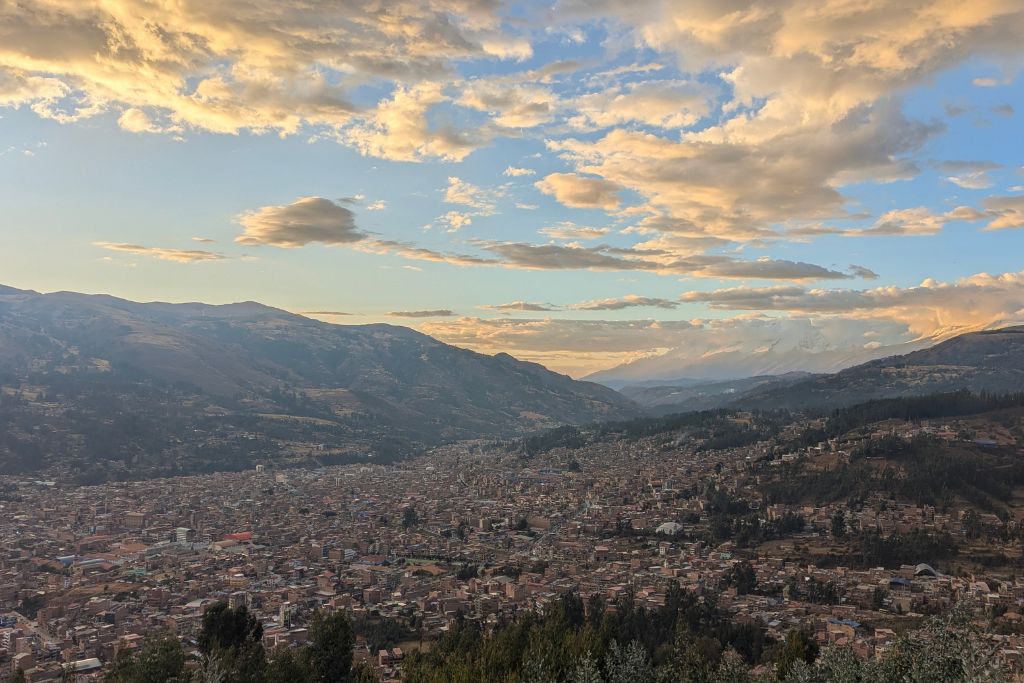
After a week in Lima, we took the bus to Huaraz, a cozy little town sitting at about 3,000 meters. It’s the gateway to most high-altitude hikes in the region, filled with hostels, bakeries, gear shops, and trekkers swapping stories over coffee.
There isn’t much to do in Huaraz itself, but that’s the charm of it. It’s a place to slow down, breathe, and let your body adjust. We gave ourselves four days to acclimatize, wandering through local markets, trying hearty Andean soups, and getting comfortable with life in the mountains again.
Some travelers use this time for acclimatization hikes, but since we both work remotely, we didn’t have the extra time. If you do, we’d highly recommend the Laguna 69 hike. It’s challenging but incredibly rewarding, and it’ll make a huge difference once you’re on the Santa Cruz Trek.
Briefing Day: Meeting Our Guide
The day before our trek, we met Yordi, our guide. The briefing was short and straightforward; he discussed the plan, the route, and what to expect. We were given our duffel bags, each limited to 3 kg, to be carried by donkeys during the hike.
Packing them felt a bit like a puzzle: warm layers, headlamps, power banks, and a few things we knew we probably didn’t need but packed anyway.
We also met the rest of our hiking group, people from different parts of the world, each with their own reason for being there. Some were in it for the challenge, others simply to disconnect for a while.
The atmosphere was relaxed but tinged with that familiar mix of excitement and uncertainty before heading into the mountains.
Day 1: The Unexpected Twist
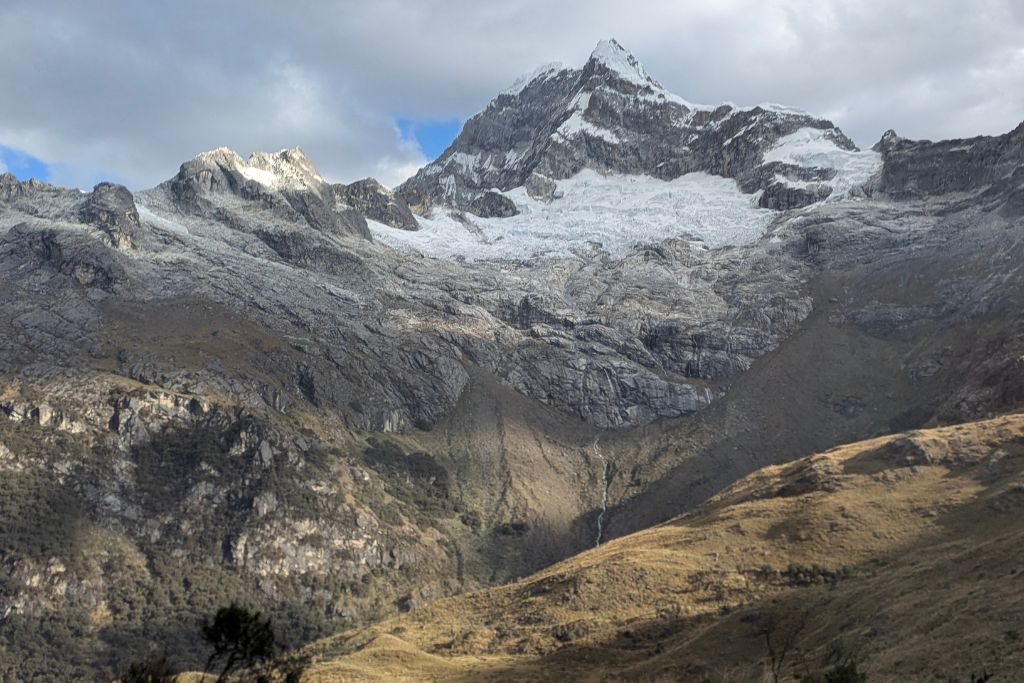
The plan was simple: a 6-hour drive from Huaraz to Vaquería, followed by a gentle 11 km hike through valleys and meadows. Easy first day, right? Not quite.
Twenty minutes before reaching Vaquería, the van came to a sudden stop. A landslide had blocked the road, with massive boulders everywhere. Locals gathered, and soon everyone was chipping away at rocks with small tools. It was surreal to see everyone come together, tackling such a massive, labor-intensive task with determination and cooperation.
The hours crawled by. We played cards, snacked, and exchanged stories in the van. There was no frustration, just acceptance. Nature was in charge, and we were guests in her domain.
Five hours later, the road finally cleared, but daylight was almost gone.
Our guide Yordi decided we’d stay in Vaquería for the night. It wasn’t part of the plan, but everyone agreed it was the right call. We found rooms in a villager’s house, and those without beds set up tents inside.
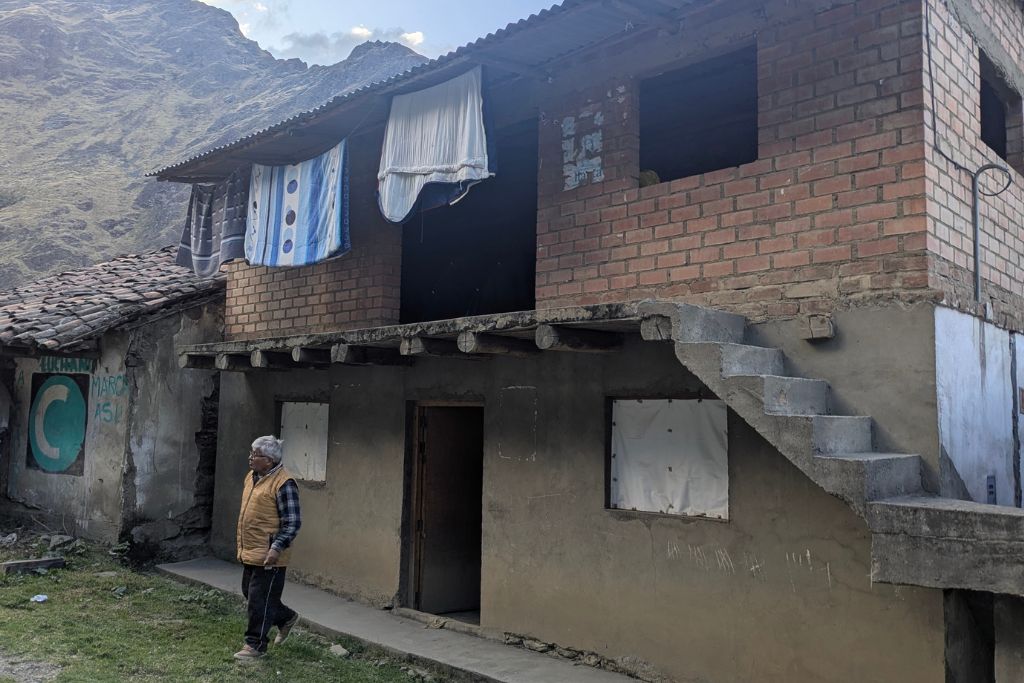
Still, there was some nervousness in the group. Losing a day meant we now had to cover 56 km in three days instead of four! The already challenging trek had now become even more challenging! Yordi reassured us, explaining that he’d adjust the route and split the distances so that it stayed manageable for everyone.
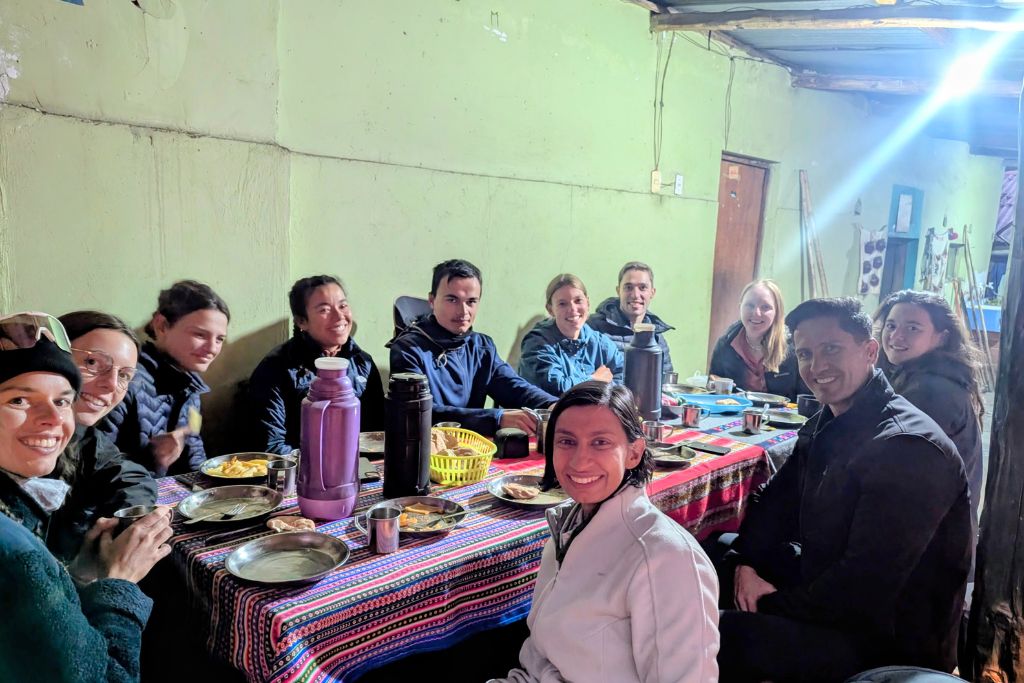
After dinner, Yordi gathered us and said calmly, “Tomorrow, we’ll start fresh. No rush, we’ll make it all work”.
Day 2: Hiking from Vaquería to the 4,500 m Camp
At 5:30 a.m., we woke up to the sound of roosters crowing and faint chatter outside the small villager’s house where we had spent the night. It was basic but warm, with the kind of hospitality that makes you appreciate how kind people can be in the remotest corners of the world.
Breakfast was simple but comforting: scrambled eggs, fresh bread with butter and jam, and steaming cups of coffee that felt like warmth in a cup.
By 7 a.m., we were on the trail, backpacks adjusted and spirits high. The path began gently through small Andean villages. Children waved, dogs followed for a few meters, and mountains framed every view. The air was cool, thin, and pure.
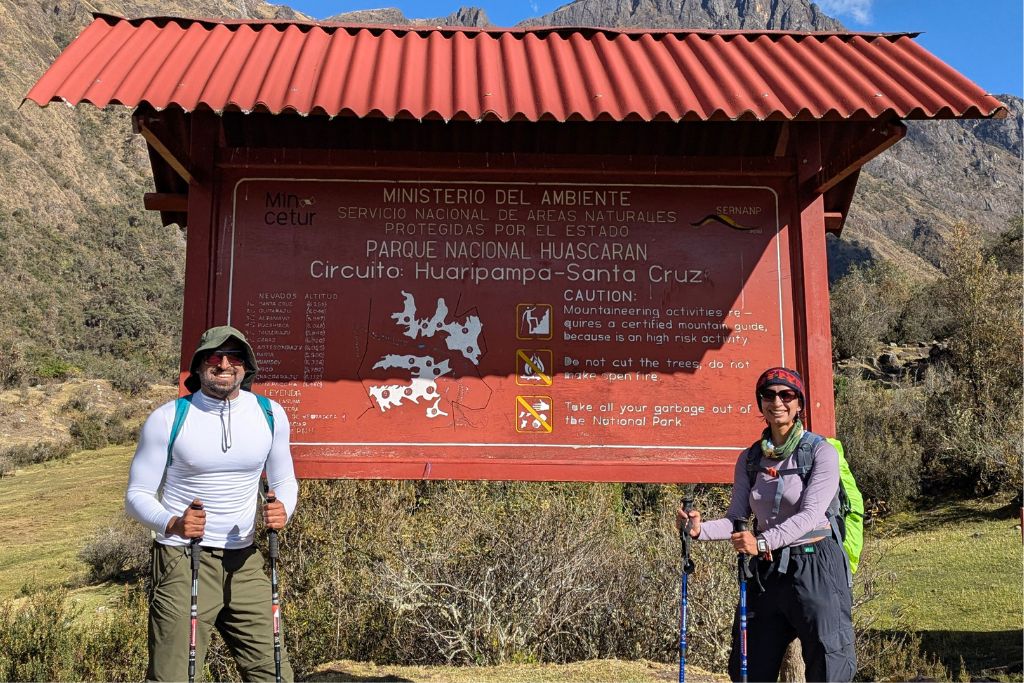
The climb gradually steepened through the morning. We stopped often to drink water and chew coca leaves, a local remedy for altitude. Every pause offered another reason to be grateful: waterfalls, wide-open meadows, and snow-capped peaks in the distance.
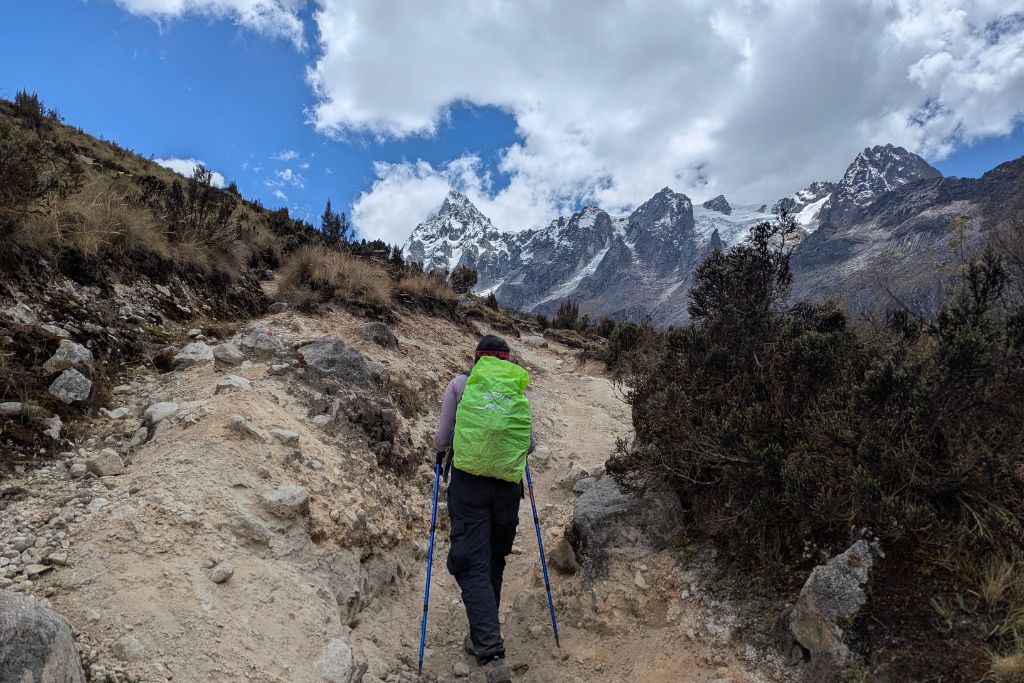
Around 1 p.m., we stopped in a small, grassy meadow for lunch. Yordi and our cook quickly set up a makeshift kitchen and somehow turned a few simple ingredients into a delicious meal: rice with chicken and fresh avocados. It was the kind of food that tastes twice as good in the mountains, good enough to give us the energy we needed for the rest of the climb.
By late afternoon, we reached our campsite at 4,500 meters, a windswept plateau surrounded by jagged peaks. The air was cold enough to make your breath visible.
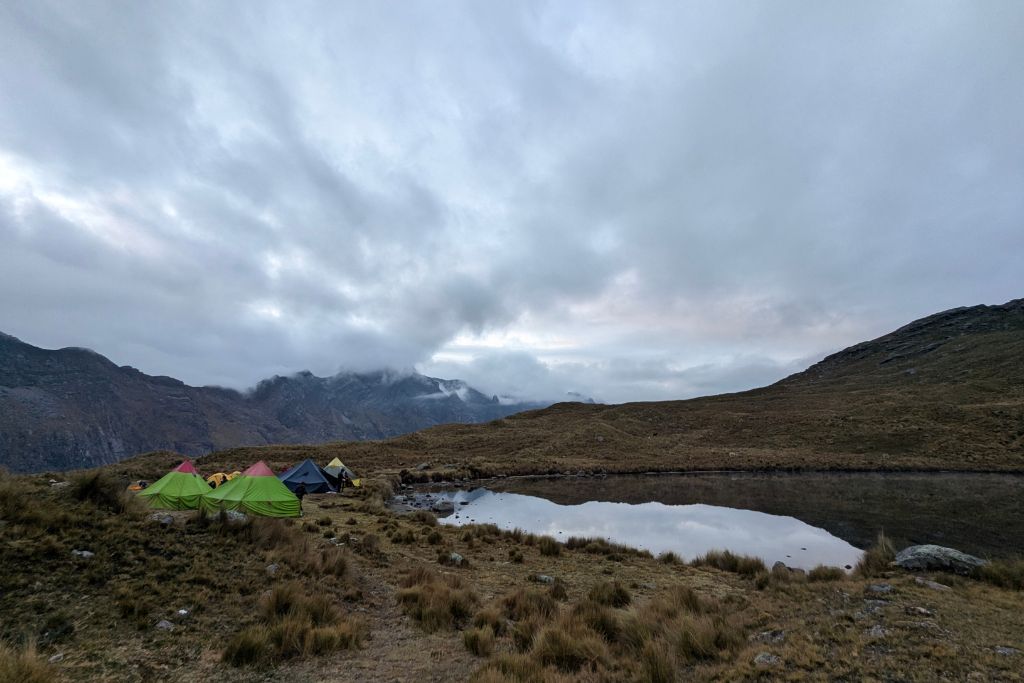
Originally, the plan had been to cross Punta Unión pass that day, but Yordi wisely adjusted. Attempting the pass after a full day of ascent would’ve been brutal. Instead, we rested early, saving our strength for the challenge ahead.
Dinner that night was warm soup, rice, and laughter echoing inside the dining tent. Outside, countless stars glittered over the Cordillera Blanca.
Day 3: Summit Day – Punta Unión and Laguna Arhuaycocha
We woke up at 5:30 a.m., just as the sun began to rise over the valley. The air was crisp, and frost still clung to our tents. Breakfast was simple but filling – similar to the day before, packed with enough fuel for what would be our toughest day yet. Yordi also handed out snacks for the trail: two cheese sandwiches, a biscuit, and a piece of fruit, small things that made a big difference later on.
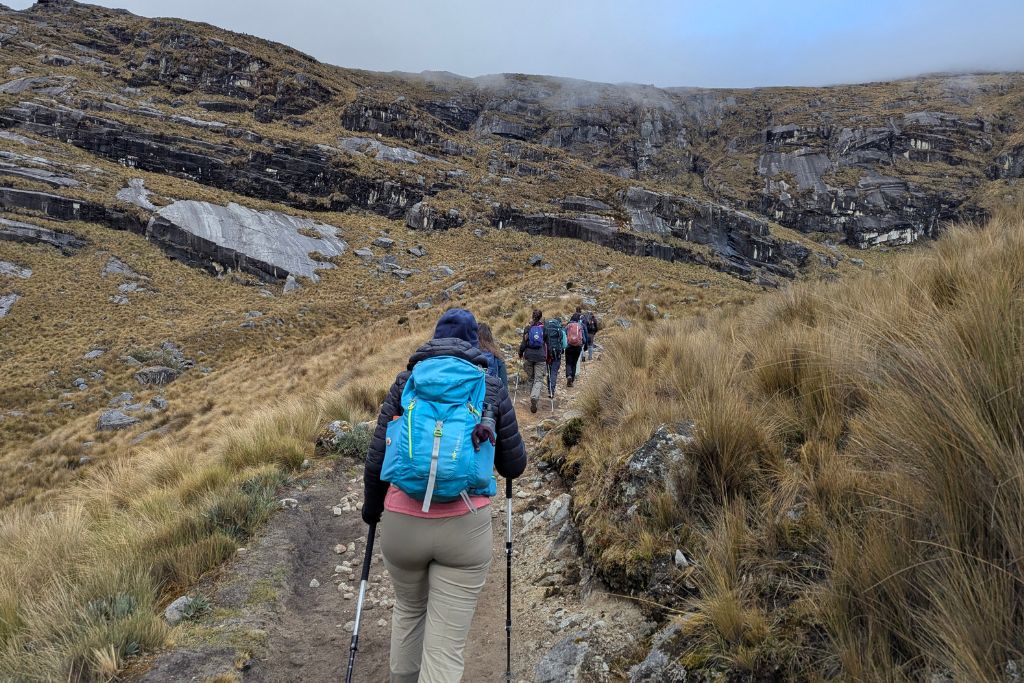
We started the climb at 7 a.m. The first stretch was gentle, winding through meadows and streams, but it didn’t take long for the trail to turn steep. The higher we went, the slower we moved. It wasn’t just the incline, it was the altitude. Every breath felt heavier, every step deliberate. But the views kept us going. We just focused on keeping one step after another.
It took a lot of effort. Everyone was trying their best, pushing hard, stopping after every few steps to catch a breath. But we kept going until we finally made it!
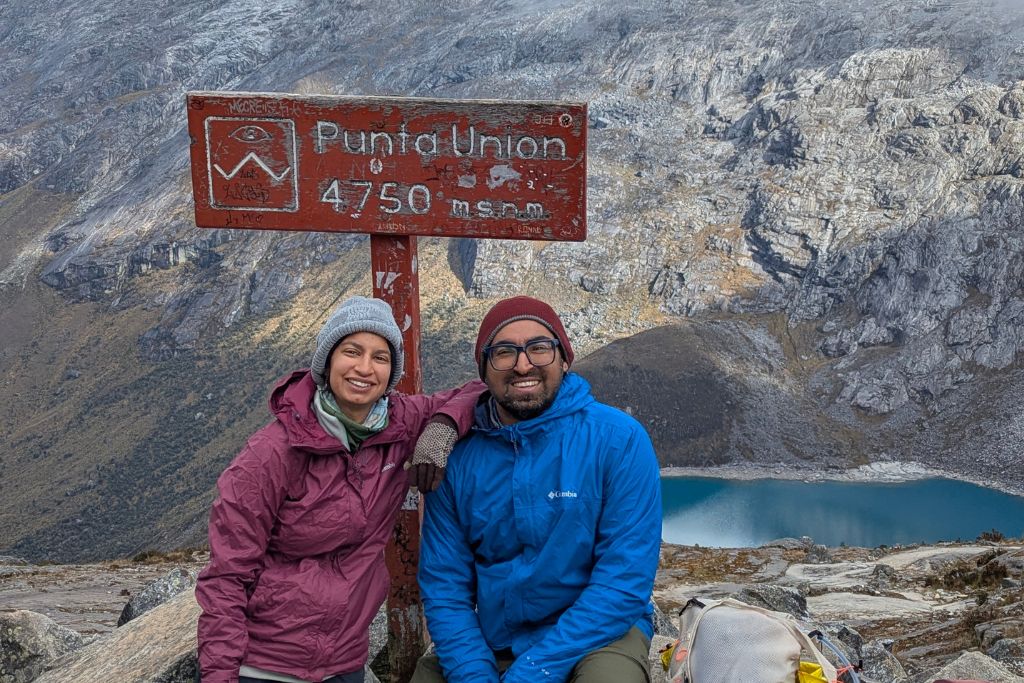
When we finally reached Punta Unión Pass (4,750 m), the world opened up. A small stone arch marked the top, and beyond it stretched a view so vast it felt unreal, glaciers, turquoise valleys, and peaks like Taulliraju, Chacraraju, and Artesonraju standing quietly in the distance. Everyone fell silent. No words, just deep breaths and awe.
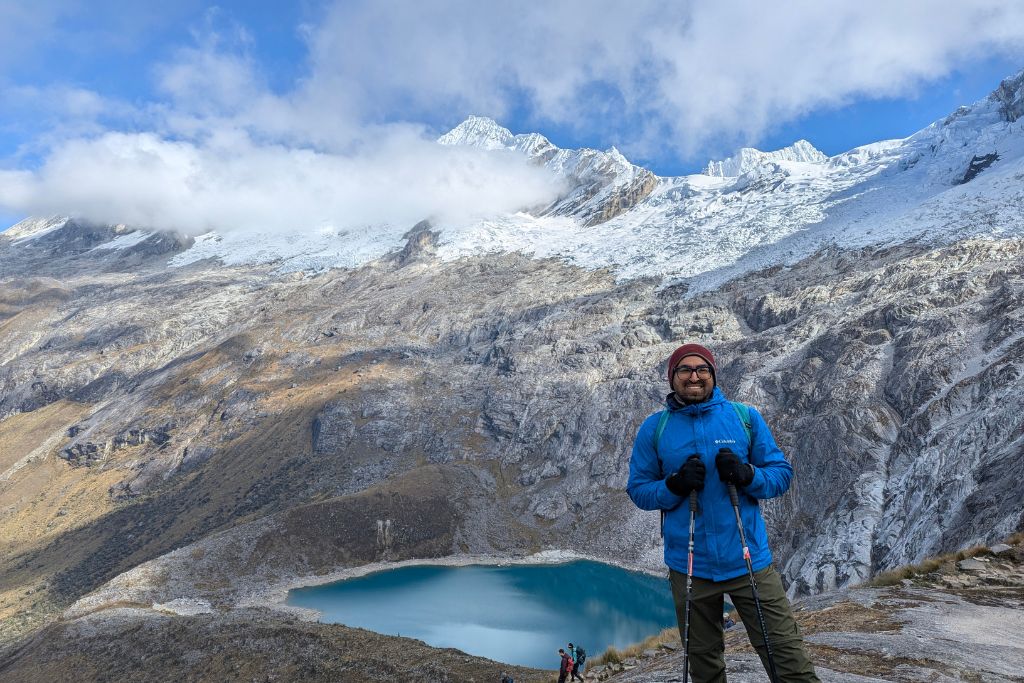
After soaking it all in, we began our descent into a lush valley, following rivers and passing herds of grazing animals. Around midday, we stopped for lunch, a simple but surprisingly delicious mix of canned tuna ceviche with avocado. Eating it under the shadow of snow-capped peaks made it even better.
Eventually, we reached the fork leading to Laguna Arhuaycocha, one of the most beautiful lakes in Peru. The detour was steep but worth every step. The lake shimmered below Artesonraju, the mountain that inspired the Paramount Pictures logo. Its turquoise water glowed under the afternoon sun, framed by glaciers and silence. We lingered there, taking photos and trying to absorb every detail before heading to camp.
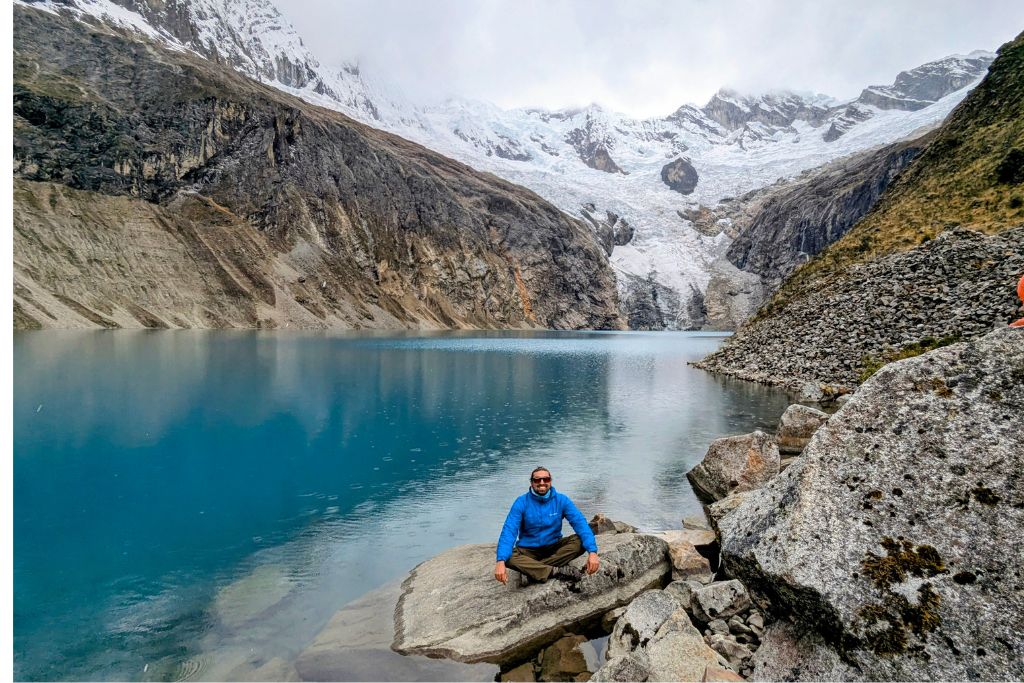
By 3 p.m., we arrived at our campsite, a stunning spot nestled beside a small lake surrounded by towering mountains. A waterfall cascaded nearby, its sound blending softly with the evening breeze. It was one of those places that didn’t feel real until you stopped moving and took it in.
Dinner that night was hearty: pasta with vegetables and a bowl of quinoa soup, simple, warm, and exactly what our tired bodies needed.
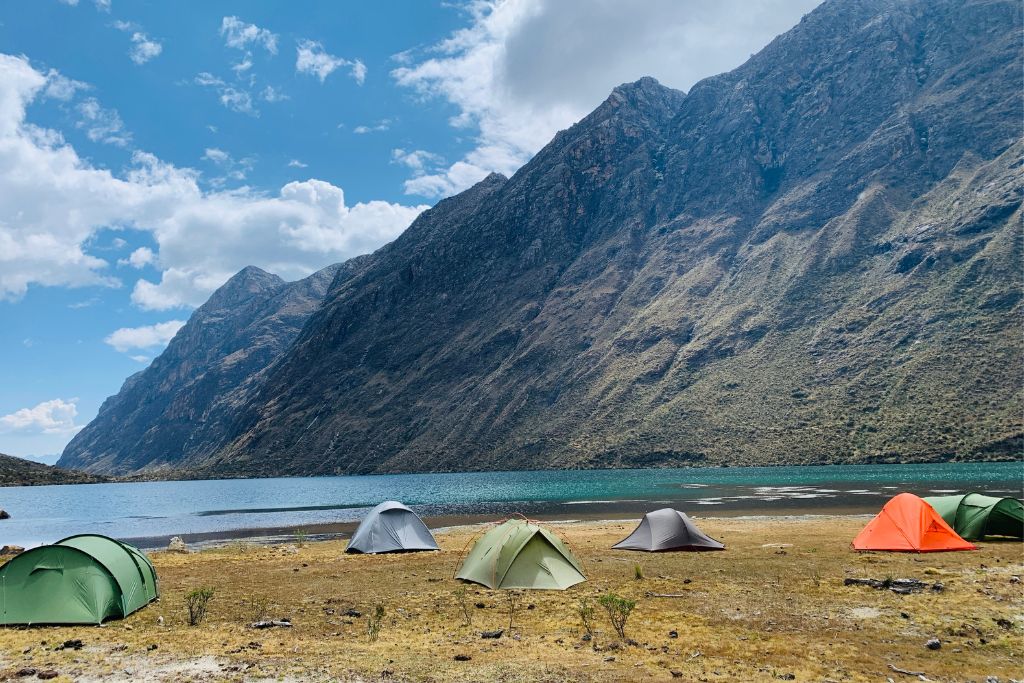
That night, the dining tent was full of quiet laughter and shared stories as we relived the hardest and most beautiful moments of the day.
Day 4: The Final Descent
Our last morning began with clear skies and calm hearts. We’d done the hardest part; now it was time to make our way down through the final stretch of the valley.
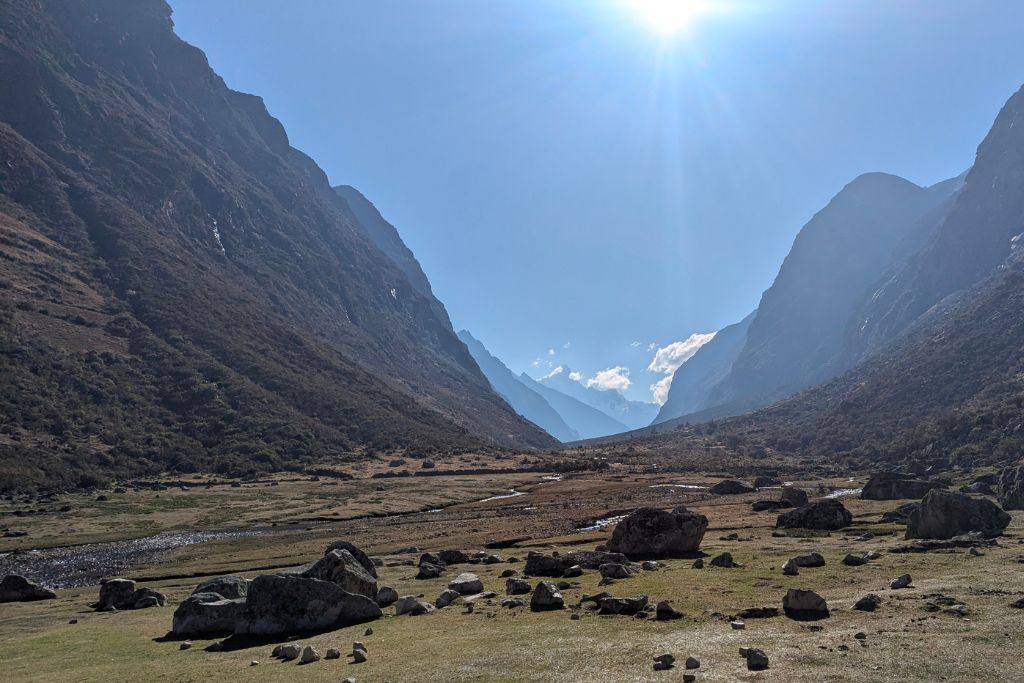
The trail gradually descended, winding through meadows and rocky paths lined with small streams. The landscape shifted subtly as we lost altitude, from stark alpine terrain to greener slopes dotted with wildflowers and low shrubs.
We moved quietly, each step feeling lighter yet slightly nostalgic. The mountains that had surrounded us for days slowly faded into the distance, their peaks still dusted with snow.
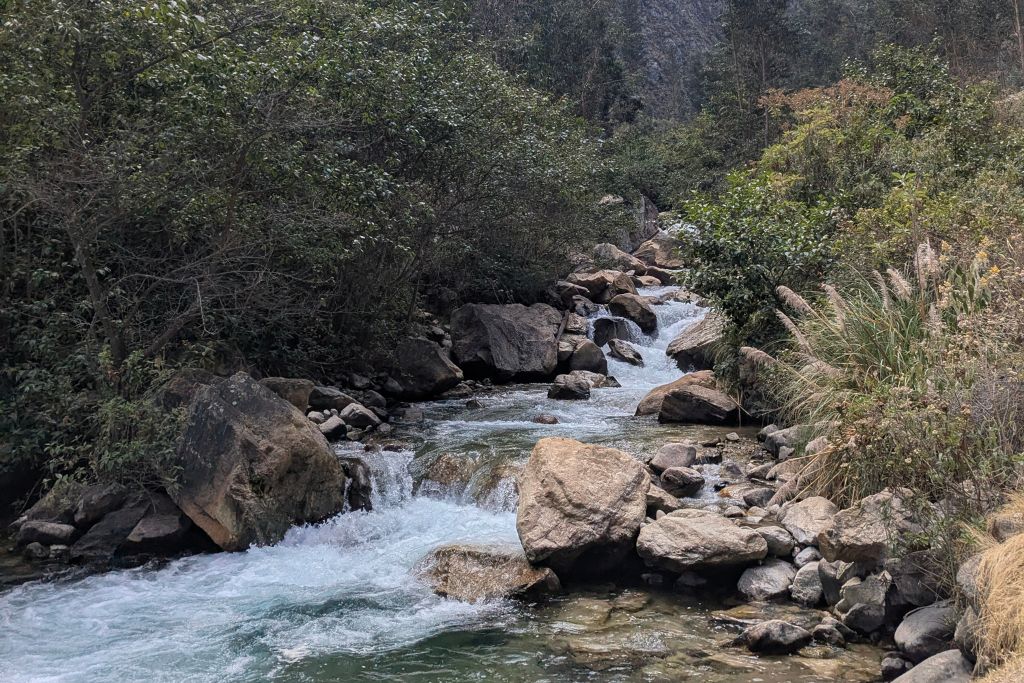
The air grew warmer and thicker as we continued our descent, and by 1 p.m., we reached the end of the trail where our van was waiting. Boots off, backpacks down – that mix of exhaustion and quiet pride settled in.
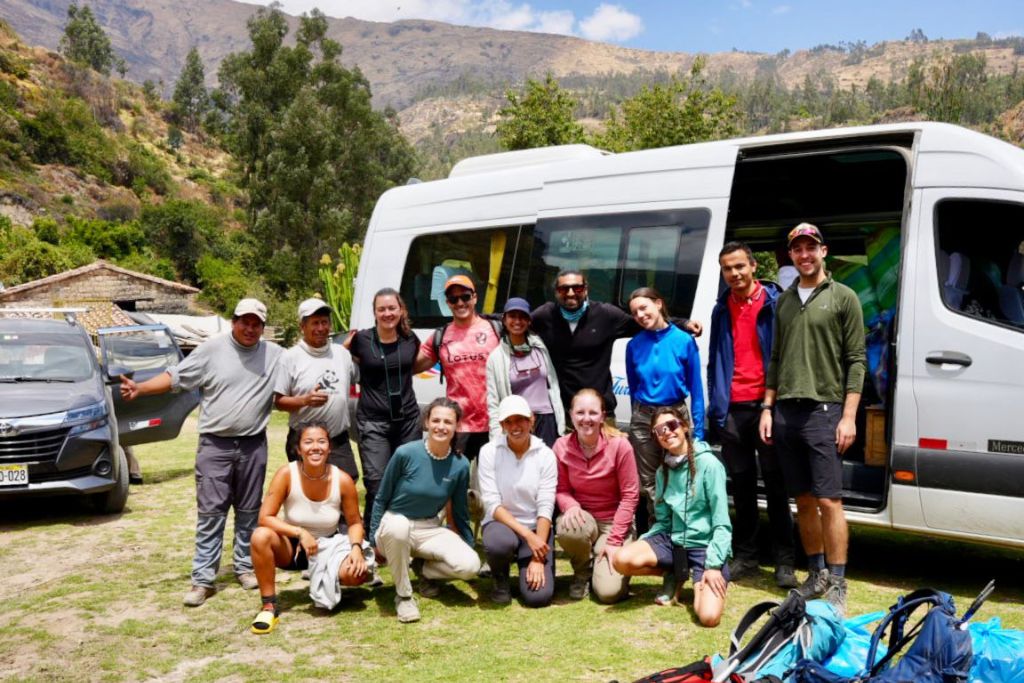
The ride back to Huaraz was peaceful. Everyone gazed out the window, lost in thought, replaying moments from the past few days, the climb to Punta Unión, the laughter at camp.
Back in town, the first hot shower felt like a luxury, but what stayed with us most wasn’t the comfort; it was the deep satisfaction of having completed one of the most beautiful treks in the Andes.
Reflections: Lessons from the Mountains
The Santa Cruz Trek didn’t unfold as we’d planned. A landslide delayed us, and the route was adjusted but that unpredictability made it better.
It taught us that nature doesn’t care about your schedule, and that’s the beauty of it. You just adapt, flow, and trust the process.
There were moments of fatigue and doubt, sure. But there were also moments of absolute stillness, when the world seemed to pause, and all that existed was wind, rock, and sky.
Tips for Santa Cruz Trek
1. Acclimatize Well
Spend at least 3–4 days in Huaraz before starting. Try shorter hikes like Laguna 69 to prepare your body.
2. Go with a Reliable Company
We can’t recommend Wanderfree Peru enough. Vincent was always available, and Yordi led with both knowledge and kindness.
3. Pack Smart
You get 3 kg in the duffel carried by donkeys. Essentials include:
- Warm layers (it freezes at night)
- Sunscreen, sunglasses, and hat
- Snacks & reusable bottle
- Power bank (no outlets)
- Basic first aid & wet wipes
View our complete list of essential hiking gears HERE!
4. Expect Cold Nights
Even in the dry season, temperatures drop below zero. Bring a warm sleeping bag and thermals.
5. Hydrate and Fuel Up
Drink water frequently and carry electrolytes. Eat even when you’re not hungry, altitude burns calories fast.
6. Be Mentally Flexible
Plans can change. Landslides, weather, or altitude issues happen. Adapt and embrace it, it’s part of the adventure.
Final Thoughts
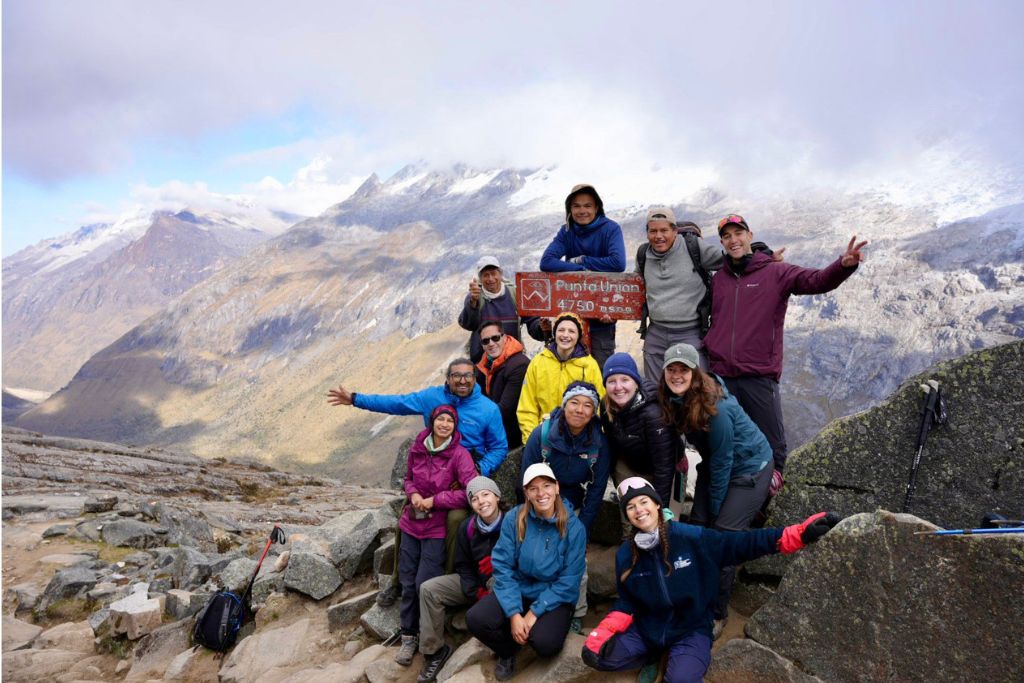
The start of our Santa Cruz Trek wasn’t ideal; a landslide threw our plans off track, but the way everything was handled made it feel perfect in its own way. That’s exactly why having a reliable tour operator matters.
Santa Cruz trek was a mix of challenge, laughter, patience, and admiration. We came back sunburned, tired, and full of gratitude.
If you’re heading to Peru and want a trek that combines stunning beauty with real adventure, this is it. The Santa Cruz Trek will test you, reward you, and remind you why we explore in the first place.
Would we do it again? Absolutely. Maybe slower next time, soaking up every sunrise, every lake, every breathless step. Because in the end, it’s not about finishing the trail. It’s about who you become along the way.
This post includes affiliate links, which means that if you make a purchase or booking through them, we may receive a small commission. It doesn’t cost you anything extra, but it helps us keep the blog going. We only recommend products or services that we fully trust.
Read More About Peru
READY TO TRAVEL LIKE A LOCAL?
Book a FREE 30-minute consulting call with us to plan your adventures!


